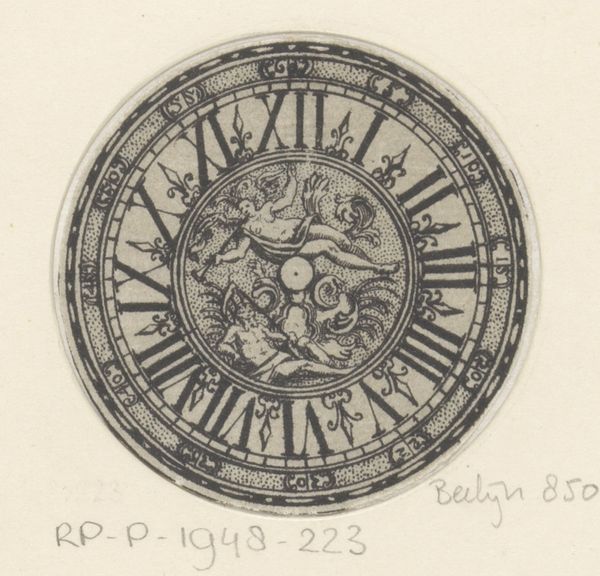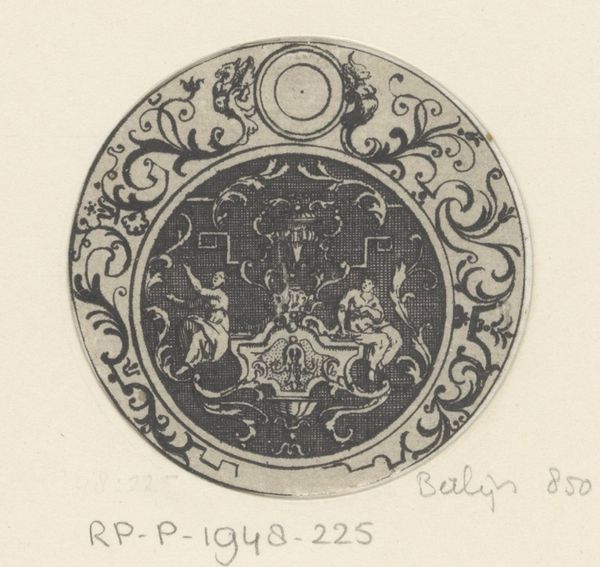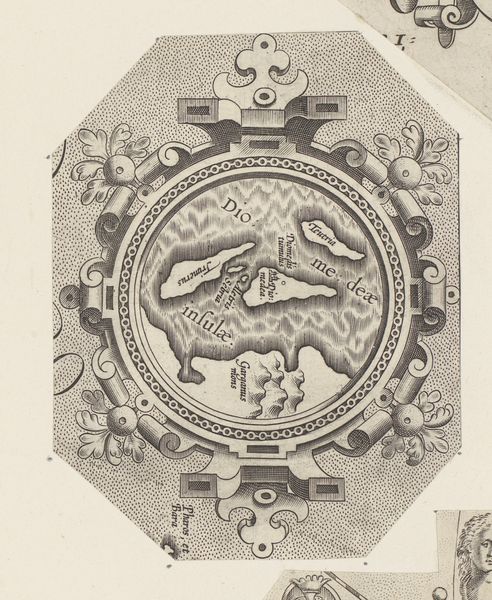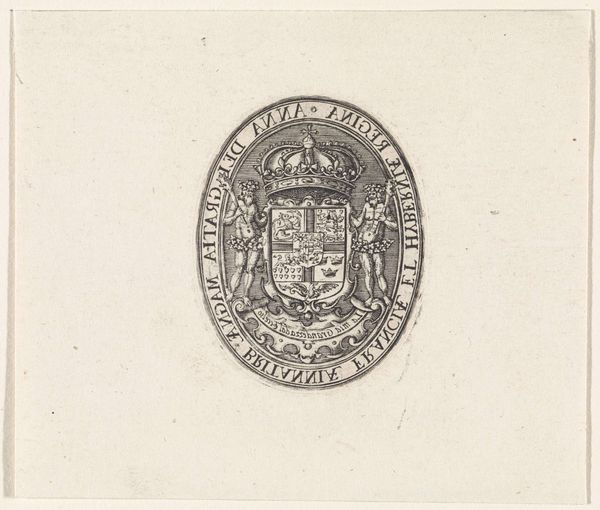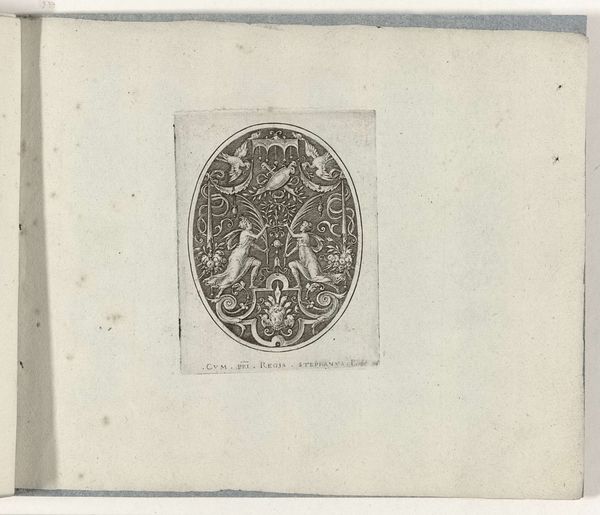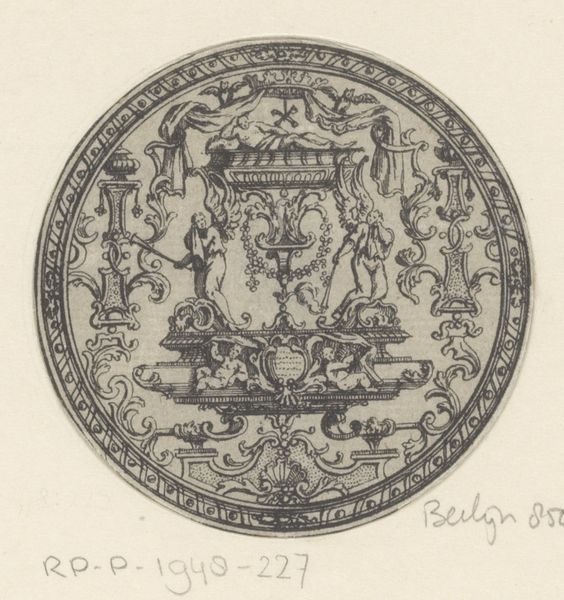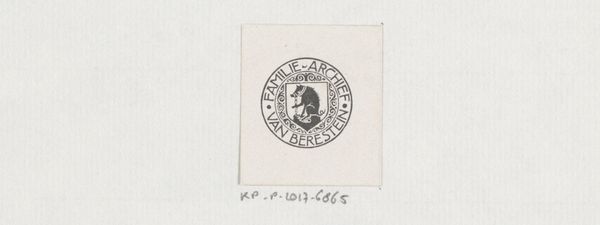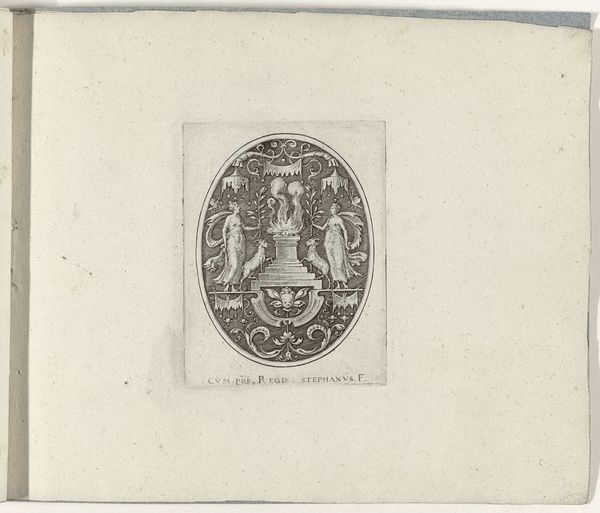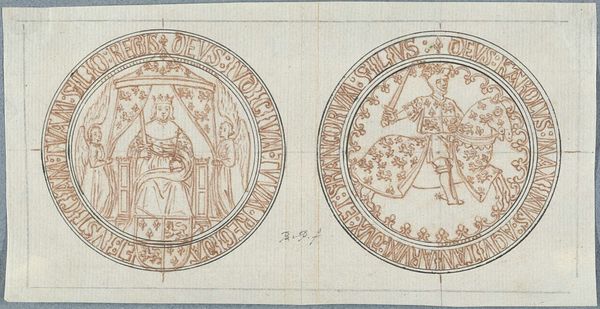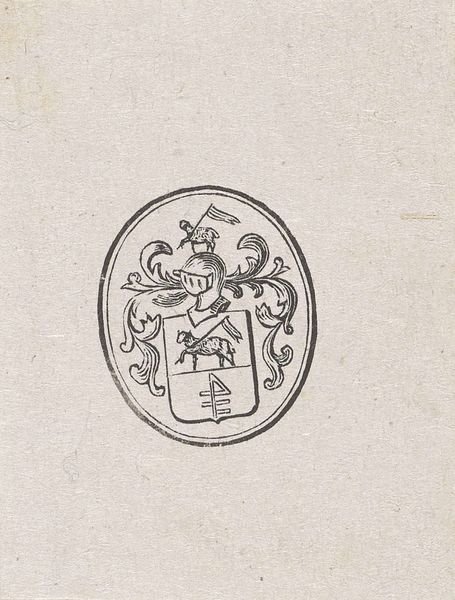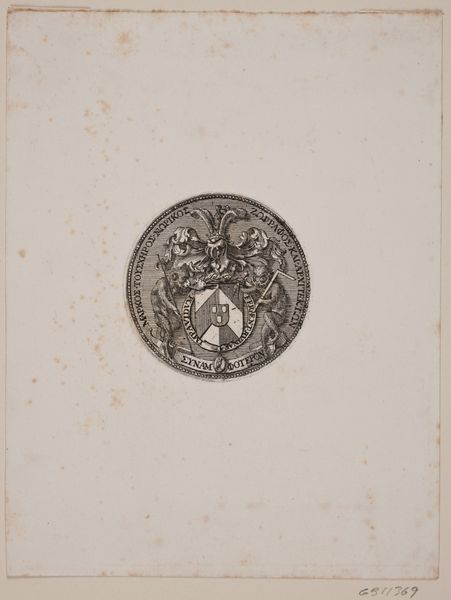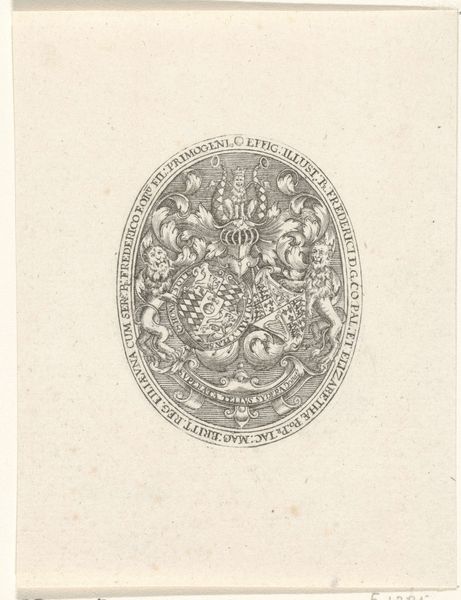
print, engraving
# print
#
old engraving style
#
geometric
#
pen-ink sketch
#
pen work
#
decorative-art
#
engraving
Dimensions: height 45 mm, width 45 mm
Copyright: Rijks Museum: Open Domain
Curator: Look at the detail in this engraving! This is “Wijzerplaat met griffioenen,” or “Dial Plate with Griffins,” created after 1703 by an anonymous artist. It's held here at the Rijksmuseum. The medium is print. Editor: Immediately, I’m struck by its paradoxical nature: an object about precision—time— rendered with a degree of artistic freedom. The griffins lend a mythic, almost chaotic energy to something so typically regimented. Curator: Precisely. Considering its place within decorative arts traditions, what we see reflects the social status that timekeeping implied. This wasn’t about checking the hour for labor, but showcasing one's affluence, even knowledge, no? Owning time, controlling it. Editor: Definitely. I see these Roman numerals juxtaposed against the baroque griffins, and I think about how even time itself has been racialized, gendered. Who had access to time, and whose time was considered more valuable? A clock became a symbol of power, intimately tied to social stratification. Curator: And this isn't just about societal power; it’s about colonial power too, right? By the 18th century, the Dutch controlled vast trade routes and empires. This object, seemingly innocuous, whispers tales of wealth extracted and people displaced. Editor: Absolutely. It's fascinating to think about the hands that would have marked the hours on this dial – whose labour kept the mechanism functioning, whose schedules were dictated by its precise movements? Did that artisan feel connected to empire as he painstakingly etched the details? Or perhaps felt alienated, a tiny cog in the engine of colonialism? Curator: Such details can get overlooked easily, especially considering our historical perspective; that time is a measured, reliable guide. Now, what stories would this time-telling device narrate to future generations of historians? Editor: The act of preservation also raises questions. How did an object associated with such specific social and political connotations come to reside in this particular collection? Does it act as a trophy or evidence of its imperial roots? Curator: Fascinating questions. This image leaves me reflecting on the social clock we live by even now. Editor: It's true. It forces us to acknowledge how time, power, and representation intersect, even now. Thank you for drawing my attention to this.
Comments
No comments
Be the first to comment and join the conversation on the ultimate creative platform.
